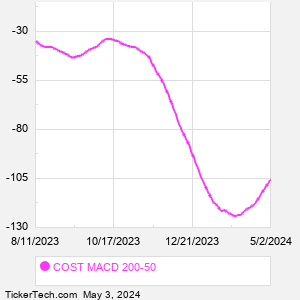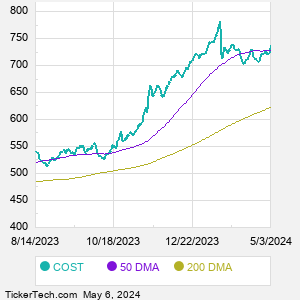Costco Wholesale is principally engaged in the operation of membership warehouses. Co. operates membership warehouses and e-commerce websites based on the concept that providing its members low prices on a selection of branded and private-label products in a range of categories. Co. provides merchandise and services, which include food and sundries, non-foods, fresh foods, warehouse ancillary, and other business. Co.'s other businesses sell products and services that complement its warehouse operations (main and warehouse ancillary businesses). Co. provides other services online in certain countries such as business delivery, travel, same-day grocery, and various other services.
When researching a stock like Costco Wholesale, many investors are the most familiar with Fundamental Analysis — looking at a company's balance sheet, earnings, revenues, and what's happening in that company's underlying business. Investors who use Fundamental Analysis to identify good stocks to buy or sell can also benefit from COST Technical Analysis to help find a good entry or exit point. Technical Analysis is blind to the fundamentals and looks only at the trading data for COST stock — the real life supply and demand for the stock over time — and examines that data in different ways. One of those ways is to calculate a Simpe Moving Average ("SMA") by looking back a certain number of days. One of the most popular "longer look-backs" is the COST 200 day moving average ("COST 200 DMA"), while one of the most popular "shorter look-backs" is the COST 50 day moving average ("COST 50 DMA"). A chart showing both of these popular moving averages is shown on this page for Costco Wholesale. Comparing two moving averages against each other can be a useful visualization tool: by calculating the difference between the COST 200 DMA and the COST 50 DMA, we get a moving average convergence divergence indicator ("COST MACD"). The COST MACD chart, in conjunction with the chart of the moving averages, basically helps in visualizing how the moving averages are showing convergence (moving closer together), or divergence (moving farther apart). |



